Crew socks are a staple in the world of apparel, known for their versatility, comfort, and functionality. These socks, which typically extend to the mid-calf, have become a go-to choice for people of all ages and lifestyles. From casual wear to athletic activities, crew socks offer a perfect blend of style and practicality. In this article, we will delve into the market overview of crew socks, exploring their popularity, material evolution, design trends, and more.
Table of Contents:
-Market Overview of Crew Socks
-The Evolution of Crew Sock Materials
-From Cotton to Synthetics: A Material Revolution
-Eco-Friendly Options: The Rise of Sustainable Fabrics
-Design Trends in Crew Socks
-Bold Patterns and Prints: Making a Statement
-Minimalist Designs: The Power of Simplicity
-Functionality and Features of Modern Crew Socks
-Enhanced Comfort: Cushioning and Support
-Moisture-Wicking and Breathability: Keeping Feet Dry
-Seasonality and Cultural Influences
-Seasonal Variations: Adapting to Weather Changes
-Cultural Heritage: Traditional Designs and Modern Twists
-Conclusion
Market Overview of Crew Socks
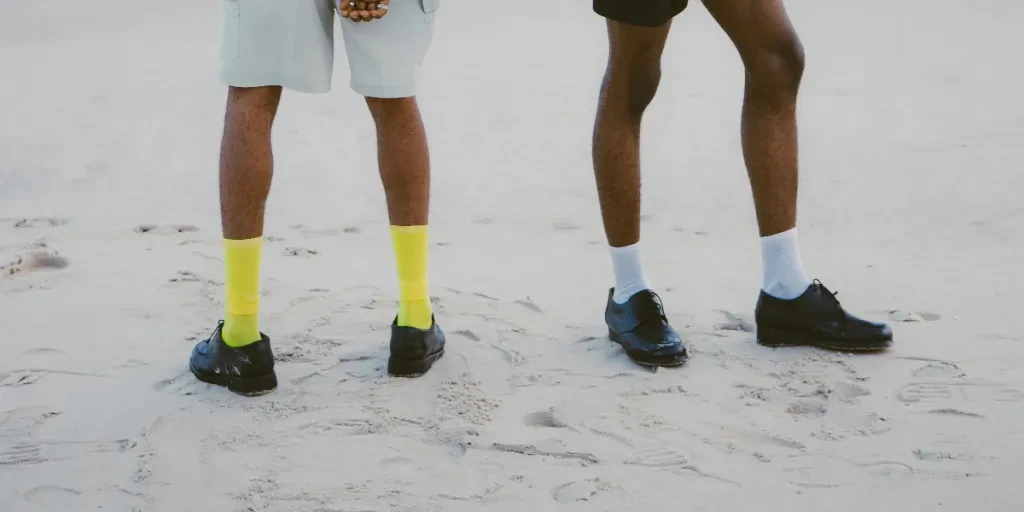
Crew socks have cemented their place as the most popular garment in the sock industry. According to a report by Research and Markets, the global socks market is projected to grow by USD 16.44 billion during 2023-2028, accelerating at a CAGR of 5.82% during the forecast period. This growth is driven by rising demand for specialized socks products, product innovation, and advancements in materials and design.
In the United States, the revenue in the socks market is projected to reach USD 0.84 billion in 2024, with an expected annual growth rate (CAGR 2024-2029) of 8.27%, resulting in a projected market volume of USD 1.25 billion by 2029, as reported by Statista. This indicates a robust market for crew socks, driven by their widespread use and adaptability.
One of the key factors contributing to the popularity of crew socks is their versatility. They are suitable for various occasions, including casual wear, dress wear, and active wear. Crew socks are known for their ability to wick away sweat, making them ideal for athletic activities. The technical materials used in their construction, such as cotton, polyester, and spandex blends, enhance their performance and comfort.
The market for crew socks is also influenced by regional trends. For instance, in China, the projected market volume for socks is expected to reach USD 1,049.00 million in 2024, making it the largest revenue generator in the global socks market. This highlights the significant demand for crew socks in the region, driven by a growing consumer base and increasing disposable income.
Key players in the crew socks market include well-known brands such as Adidas, Nike, Puma, and Under Armour. These companies continuously innovate and expand their product portfolios to cater to the evolving preferences of consumers. For example, advancements in materials have led to the development of moisture-wicking and breathable fabrics, enhancing the overall comfort and functionality of crew socks.
Future trends in the crew socks market indicate a growing emphasis on sustainability. Consumers are increasingly seeking eco-friendly options, leading to the rise of sustainable fabrics such as organic cotton, bamboo, and recycled materials. This shift towards sustainability is expected to drive further innovation and growth in the crew socks market.
The Evolution of Crew Sock Materials
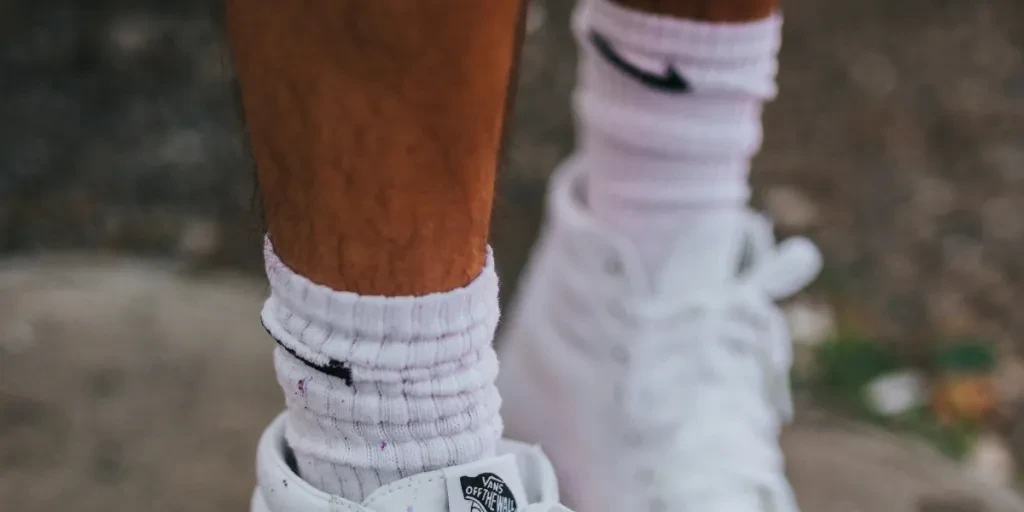
From Cotton to Synthetics: A Material Revolution
Crew socks have undergone a significant transformation in terms of the materials used in their production. Traditionally, cotton was the primary material for crew socks due to its softness, breathability, and natural feel. However, as technology advanced, the apparel industry began to explore synthetic materials that offered enhanced performance features.
The shift from cotton to synthetic materials marked a material revolution in the crew sock industry. Synthetic fibers such as polyester, nylon, and spandex have become increasingly popular due to their durability, elasticity, and moisture-wicking properties. These materials provide better support and comfort, making them ideal for athletic and everyday wear. According to a professional report, the use of synthetic materials in crew socks has surged, with retailers investing more in these options to meet consumer demand.
Moreover, the introduction of advanced knitting techniques has allowed for the incorporation of multiple materials in a single sock, enhancing its functionality. For instance, crew socks now often feature reinforced heels and toes made from durable synthetics, while the main body of the sock may still be composed of cotton for comfort. This combination of materials ensures that crew socks are both comfortable and long-lasting.
Eco-Friendly Options: The Rise of Sustainable Fabrics
As environmental concerns have become more prominent, the apparel industry has responded by developing eco-friendly options for crew socks. Sustainable fabrics such as organic cotton, bamboo, and recycled polyester are gaining traction among consumers who prioritize environmental responsibility.
Organic cotton is grown without the use of harmful pesticides and chemicals, making it a more sustainable choice compared to conventional cotton. Bamboo, on the other hand, is a highly renewable resource that requires minimal water and no pesticides to grow. It also has natural antibacterial properties, making it an excellent material for socks.
Recycled polyester, made from post-consumer plastic bottles, is another sustainable option that has gained popularity. This material not only reduces waste but also offers the same performance benefits as virgin polyester, such as moisture-wicking and durability. According to industry data, the demand for crew socks made from sustainable fabrics has increased significantly, with retailers expanding their eco-friendly product lines to cater to this growing market.
Design Trends in Crew Socks
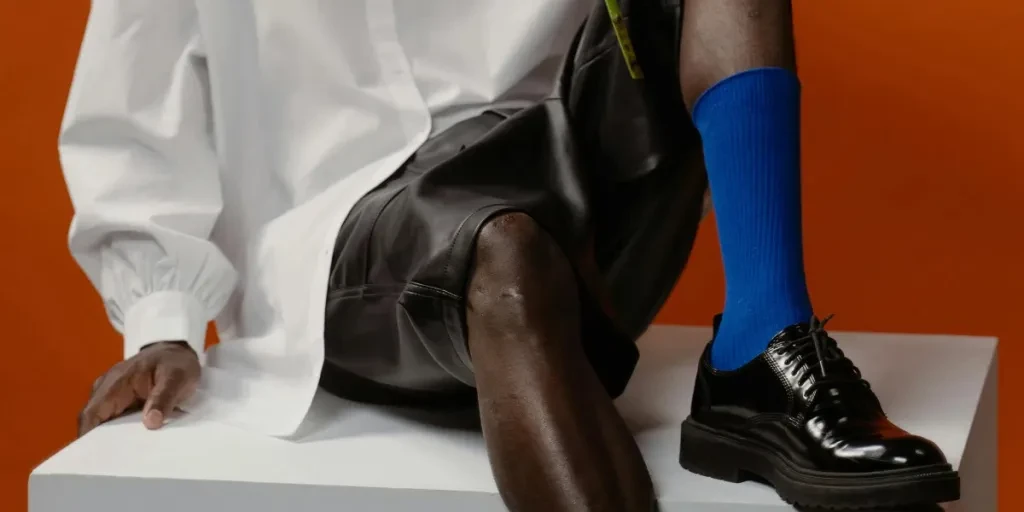
Bold Patterns and Prints: Making a Statement
Crew socks have evolved from being a basic wardrobe staple to a fashion statement. Bold patterns and prints have become a major trend, allowing individuals to express their personality and style through their socks. From vibrant geometric designs to quirky motifs, crew socks are now available in a wide range of eye-catching patterns.
This trend is particularly popular among younger consumers, such as Gen Z, who view visible socks as a fashionable accessory. According to a report, new crew sock styles with bold patterns surged by 26% year-over-year at mass-market retailers. This increase reflects the growing demand for statement socks that add a pop of color and fun to any outfit.
Minimalist Designs: The Power of Simplicity
While bold patterns and prints are making waves, minimalist designs continue to hold their own in the crew sock market. Simple, understated designs in neutral colors are favored by those who prefer a classic and versatile look. Minimalist crew socks often feature clean lines, solid colors, and subtle textures, making them suitable for both casual and formal occasions.
The appeal of minimalist designs lies in their timelessness and versatility. They can be easily paired with a variety of outfits, from jeans and sneakers to dress pants and loafers. Retailers have recognized the enduring popularity of minimalist crew socks and continue to offer a wide range of options to cater to this market segment.
Functionality and Features of Modern Crew Socks
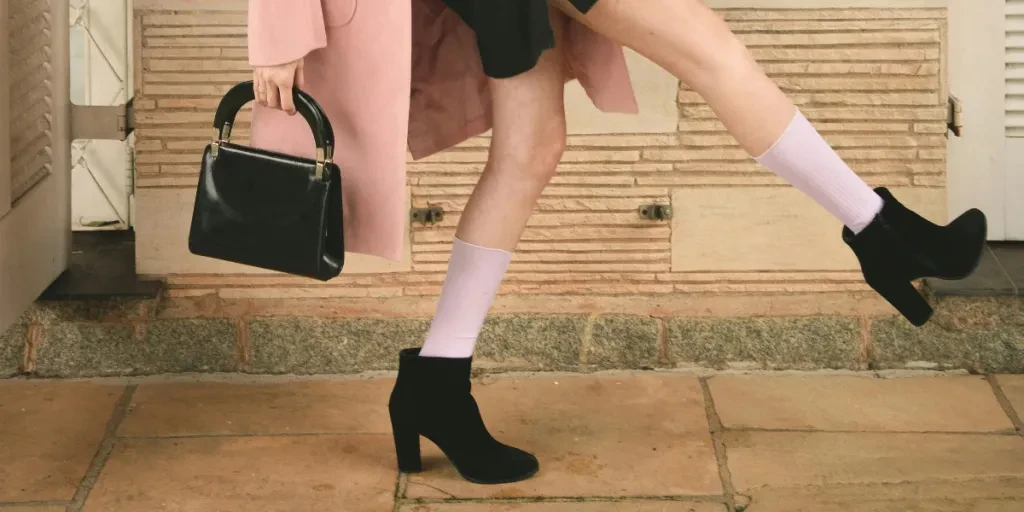
Enhanced Comfort: Cushioning and Support
Modern crew socks are designed with enhanced comfort in mind, incorporating features such as cushioning and arch support. Cushioning in the heel and toe areas provides extra padding, reducing the impact on the feet during activities such as walking, running, or standing for long periods. This added comfort is particularly beneficial for athletes and individuals with active lifestyles.
Arch support is another important feature that has been integrated into modern crew socks. By providing targeted compression and support to the arch of the foot, these socks help improve stability and reduce fatigue. This is especially important for individuals with flat feet or those who require additional support during physical activities.
Moisture-Wicking and Breathability: Keeping Feet Dry
One of the key advancements in crew sock technology is the development of moisture-wicking and breathable materials. These features are essential for keeping feet dry and comfortable, especially during intense physical activities or in hot weather.
Moisture-wicking fabrics, such as polyester and nylon, are designed to draw sweat away from the skin and allow it to evaporate quickly. This helps prevent the buildup of moisture, which can lead to discomfort and blisters. Additionally, breathable materials allow for better air circulation, keeping feet cool and reducing the risk of odor.
According to industry reports, the demand for moisture-wicking and breathable crew socks has increased as consumers seek products that offer both comfort and performance. Retailers have responded by incorporating these features into their sock designs, ensuring that modern crew socks meet the needs of today’s active and health-conscious consumers.
Seasonality and Cultural Influences
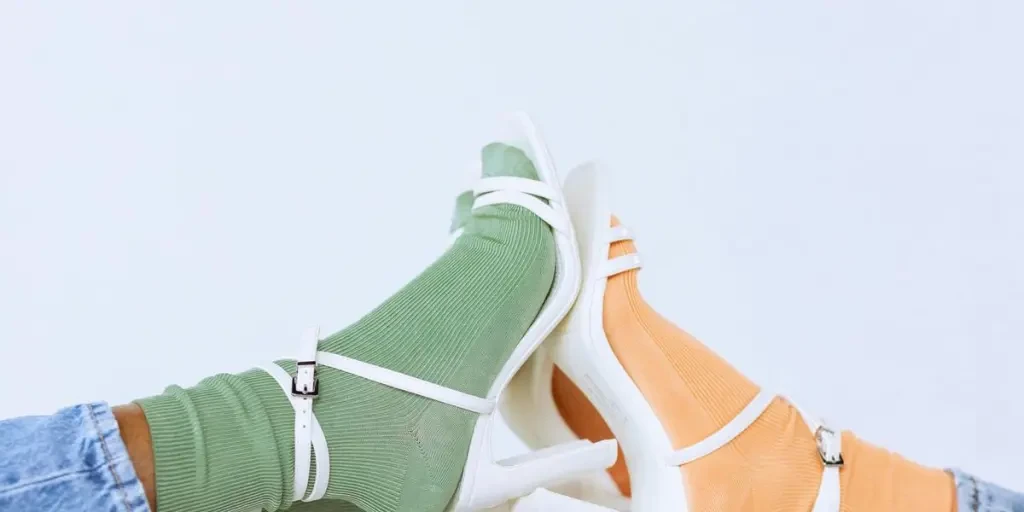
Seasonal Variations: Adapting to Weather Changes
Crew socks are not just a year-round staple; they also adapt to seasonal variations. In colder months, thicker and warmer materials such as wool and thermal fabrics are used to provide insulation and keep feet warm. These winter crew socks often feature additional cushioning and a higher cut to protect against the cold.
In contrast, summer crew socks are designed to be lightweight and breathable, using materials such as cotton and bamboo. These socks prioritize moisture-wicking and ventilation to keep feet cool and dry in hot weather. Retailers often adjust their sock assortments based on seasonal demand, ensuring that consumers have access to the appropriate options for each time of year.
Cultural Heritage: Traditional Designs and Modern Twists
Cultural heritage plays a significant role in the design of crew socks, with traditional patterns and motifs being reimagined with modern twists. For example, traditional argyle and fair isle patterns have been updated with contemporary color palettes and innovative knitting techniques. These designs pay homage to cultural traditions while appealing to modern tastes.
Additionally, cultural influences from around the world are being incorporated into crew sock designs. From Japanese-inspired prints to African tribal patterns, these socks celebrate global diversity and offer consumers a unique way to express their cultural identity. According to market data, the inclusion of cultural elements in crew sock designs has resonated with consumers, leading to increased interest and sales.
Conclusion
The evolution of crew socks reflects broader trends in the apparel industry, from the adoption of advanced materials and sustainable fabrics to the embrace of bold and minimalist designs. Modern crew socks are not only functional but also serve as a fashion statement, catering to diverse consumer preferences. As the industry continues to innovate, the future of crew socks looks promising, with new technologies and design trends set to further enhance their appeal.





 বাংলা
বাংলা Nederlands
Nederlands English
English Français
Français Deutsch
Deutsch हिन्दी
हिन्दी Bahasa Indonesia
Bahasa Indonesia Italiano
Italiano 日本語
日本語 한국어
한국어 Bahasa Melayu
Bahasa Melayu മലയാളം
മലയാളം پښتو
پښتو فارسی
فارسی Polski
Polski Português
Português Русский
Русский Español
Español Kiswahili
Kiswahili ไทย
ไทย Türkçe
Türkçe اردو
اردو Tiếng Việt
Tiếng Việt isiXhosa
isiXhosa Zulu
Zulu